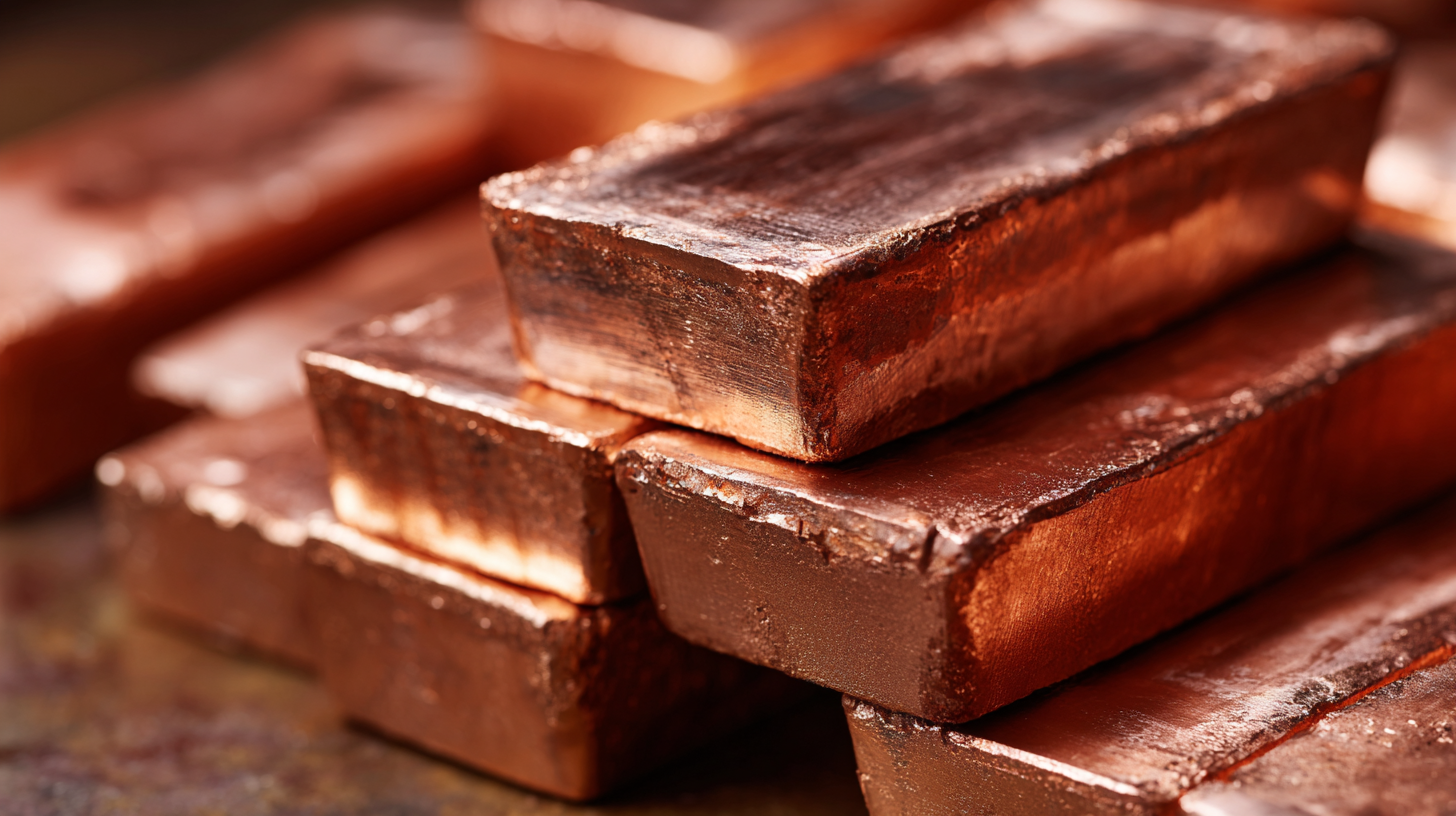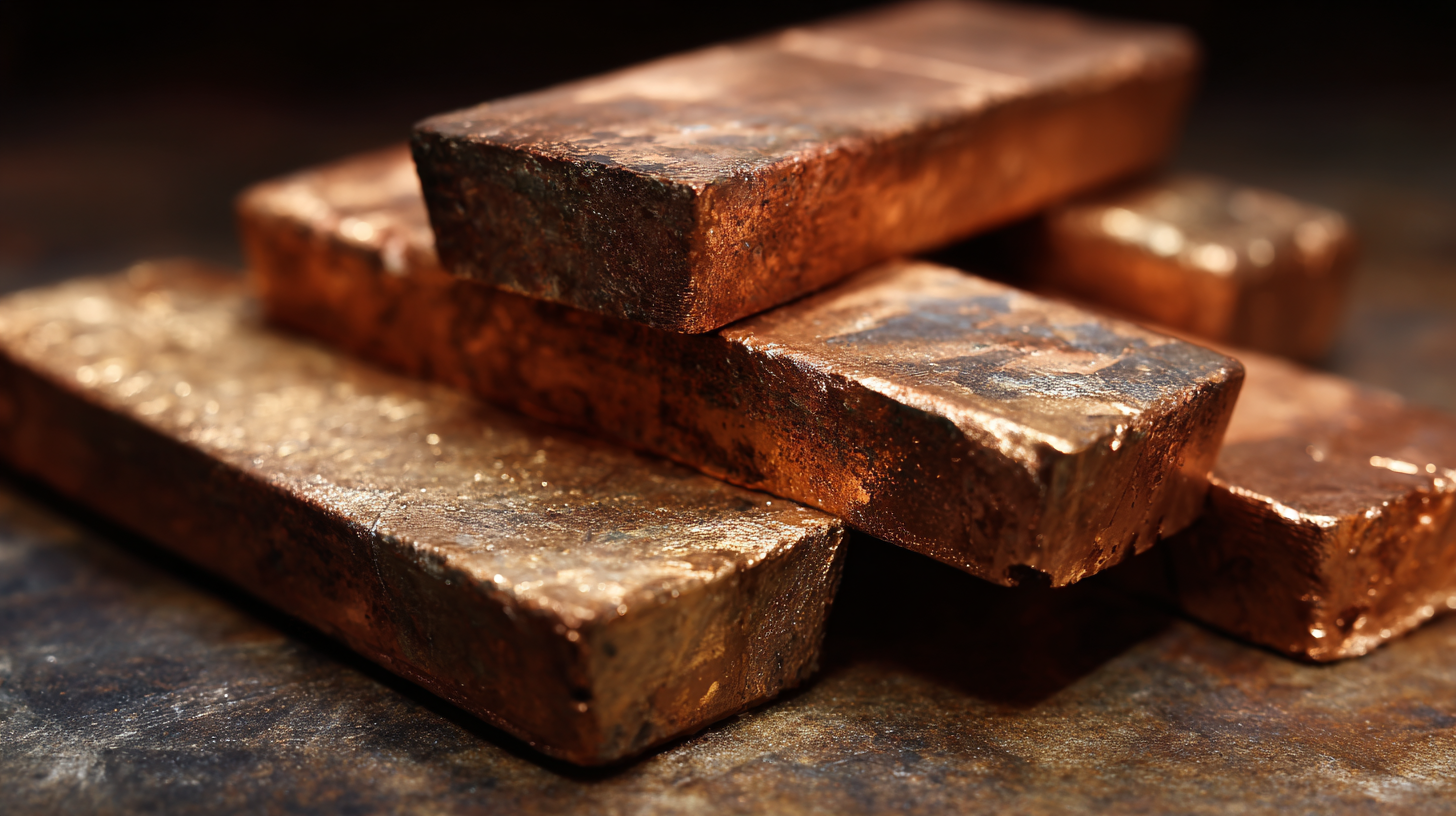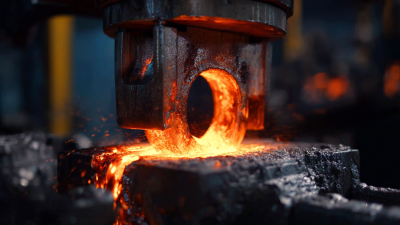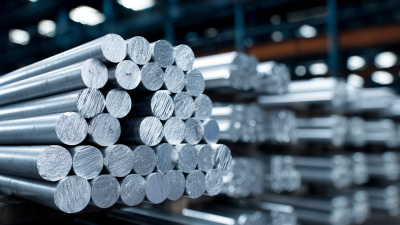2025 Copper Price Forecast Unveiling 5 Trends Every Global Buyer Must Know
Table of Contents
- Key Factors Influencing Copper Prices in 2025
- Emerging Markets: Their Impact on Global Copper Demand
- Technological Advancements Shaping Copper Production
- Environmental Regulations and Their Effect on Copper Supply
- Investment Trends: How Buyers Can Strategize in 2025
- Analyzing Historical Price Trends to Predict Future Movements
- FAQS
- Conclusion
- Related Posts
As global markets keep changing, it’s really important for smart buyers to get a good handle on how key commodities are moving. The upcoming 'Copper Price Projections for 2025' are going to have a big ripple effect across different industries, especially in metal distribution and manufacturing. In this scene, Shanghai Miandi Metal Group Co., Ltd. is a major player—they offer a wide range of aluminum products, from 1000 to 8000 series. They’ve got everything from aluminum plates and rods to tubes, which are super important in sectors like aviation, aerospace, and shipbuilding. In this blog, we’re gonna break down five key trends that anyone buying on a global scale really needs to understand—these are the shifts shaping copper prices right now. Keeping an eye on these changes isn’t just about staying in the loop; it’s about strategically positioning your business to stay ahead in a pretty competitive world.

Key Factors Influencing Copper Prices in 2025
Looking ahead to 2025, it's crucial for global buyers to really understand what’s going to drive copper prices. Things like supply chain hiccups, energy costs, and shifts in demand—especially from sectors like construction and electronics—are all going to have a big say. Plus, the worldwide push for greener energy, like electric vehicles and renewable power sources, is expected to boost copper demand big time. That means suppliers need to stay sharp and be ready to adapt to any price swings or market surprises.
On top of all that, geopolitical tensions—think tariffs or trade disputes—can throw a wrench in the works, making copper supplies even scarcer and prices climb higher. For companies like Shanghai Miandi Metal Group Co., Ltd., which mainly deals with aluminum products, keeping a close eye on the copper scene is a must. The way aluminum and copper prices move together could really shake up manufacturing costs and pricing strategies across industries, from aerospace to shipbuilding. Getting a good handle on these trends and what they mean is key to staying competitive in this constantly changing market landscape.
Emerging Markets: Their Impact on Global Copper Demand
Looking ahead to 2025, the outlook for copper prices is really tied to how emerging markets are developing. Places like India, Brazil, and Southeast Asia are gonna have a big impact on global demand because they're going through rapid industrial growth and urban expansion. These regions aren't just using more copper for building stuff; they're also boosting their use for electric vehicles and renewable energy projects. For anyone involved in sourcing, it’s super important to keep an eye on these trends—knowing where demand is headed can make all the difference.
Here's a pro tip: if you want to stay ahead of the game in the copper market, think about diversifying your supply chain by forging partnerships in these rising markets. It’s a smart move—helps reduce the risks that come with price swings and keeps your access to materials reliable.
And don't forget — the push toward sustainability is really ramping up demand for copper, especially in green tech. Emerging markets are pouring investments into renewable energy, which needs copper for stuff like solar panels and wind turbines. This shift might push prices higher, so businesses should get ready for changes in the market landscape.
Another tip: make sure you’re constantly checking out new policies and projects in renewable energy happening in these emerging markets. Staying informed can give you a sneak peek into future demand, helping you manage inventory proactively and stay ahead of the curve.
2025 Copper Price Forecast Unveiling 5 Trends Every Global Buyer Must Know
| Trend | Impact on Global Copper Demand | Emerging Markets Contribution (%) | Yearly Growth Rate (%) |
|---|---|---|---|
| Green Technology Adoption | Increased demand for copper in renewable energy installations | 35% | 7% |
| Urbanization in Asia | Rising infrastructure development leading to higher copper usage | 40% | 5% |
| Electric Vehicle Production | Significant increase in copper demand for batteries | 25% | 10% |
| Supply Chain Disruptions | Potential shortages leading to price fluctuations | 15% | 2% |
| Investment in Mining Infrastructure | Enhanced production to meet demand growth | 30% | 6% |
Technological Advancements Shaping Copper Production
Looking ahead, the future of copper production is really shaping up around some pretty exciting tech breakthroughs that are shaking up the industry as we know it. You’ve probably heard about things like automation and artificial intelligence—these aren’t just buzzwords, they’re actually transforming how mines operate, making everything more efficient. Thanks to these innovations, firms can now dig up copper at lower costs and with less impact on the environment, which is a huge win considering the increasing global demand for this vital metal.
And it doesn’t stop there. Recycling tech is also stepping up big time, playing a key role in making copper sourcing more sustainable. As folks push harder to cut waste and promote circular economy ideas, new methods are popping up that help recover copper from e-waste and scrap materials more effectively. This shift not only means we’re relying less on traditional mining but also helps cut down our carbon footprint — a big deal for environmentally conscious consumers and regulators alike. As these tech trends keep evolving, it’s really important for buyers around the world to stay in the loop so they can navigate the ups and downs of the copper market more smoothly.
Environmental Regulations and Their Effect on Copper Supply
Looking ahead to 2025, there's quite a lot to keep an eye on, especially when it comes to copper prices. One big factor that's gaining traction is the increasing concern over environmental regulations. These rules are designed to tackle the often unsustainable practices in mining and push for more responsible sourcing. Of course, this could have a direct impact on how much copper is available. Since copper plays a crucial role in everything from construction to electronics, any restrictions or tighter controls on production are likely to push prices up. That means buyers around the globe might need to rethink their procurement strategies a bit.
For those in the market, a good tip is to stay in the loop about changes in regulations or new trade policies that could shake up copper supply. Building solid, long-term relationships with trustworthy suppliers can also help smooth out potential supply chain hiccups. And don’t forget — companies like Shanghai Miandi Metal Group Co., Ltd. offer a variety of aluminum products, which can serve as handy alternatives, especially in areas where copper is usually the go-to.
One more thing worth considering is weaving sustainability into your sourcing decisions. It’s smart to choose suppliers who truly commit to eco-friendly practices and meet high environmental standards. Not only does this help avoid supply issues down the line, but it also boosts your company’s reputation among customers who are increasingly eco-conscious. In the end, aligning your procurement with these green goals can really pay off, both in terms of risk management and brand image.

Investment Trends: How Buyers Can Strategize in 2025
 Looking ahead to 2025, getting a handle on the investment trends in the copper market is pretty important for global buyers who want to stay ahead of the game. One major thing to keep in mind is how demand for copper is booming, thanks in large part to the green energy shift. As countries push more for renewable energy and electric vehicles, the need for copper—since it’s such a key component in both—is expected to skyrocket. So, it’s smart for buyers to brace for higher prices and try to lock in their supplies early on, before shortages become a real issue.
Looking ahead to 2025, getting a handle on the investment trends in the copper market is pretty important for global buyers who want to stay ahead of the game. One major thing to keep in mind is how demand for copper is booming, thanks in large part to the green energy shift. As countries push more for renewable energy and electric vehicles, the need for copper—since it’s such a key component in both—is expected to skyrocket. So, it’s smart for buyers to brace for higher prices and try to lock in their supplies early on, before shortages become a real issue.
There’s also the whole thing with geopolitical changes and trade policies that’s shaking things up. Global policies around mining and tariffs can cause some pretty wild market swings. Staying informed about what governments are up to, and maybe even playing it safe by diversifying where you get your copper from, can really help reduce risks. Plus, with new tech in mining and recycling popping up all the time, the whole supply picture could look different pretty soon. That’s why it’s so important for buyers to stay flexible and adapt their plans as things evolve. If you keep an eye on these trends, you’ll be in a strong position to make smart moves and succeed in the copper game in 2025.
Analyzing Historical Price Trends to Predict Future Movements
As we dig into what might happen with copper prices in 2025, it’s really helpful to look back at how prices have moved over time. Over the last decade, a bunch of factors—like global demand, supply issues, and political tensions—have caused price swings. By studying these past trends, buyers around the world can spot patterns that could help them make smarter purchasing choices down the line. For example, consistent demand from industries like construction and renewable energy has often pushed prices up, so staying alert to these trends is pretty important if you want to plan your procurement strategy properly.
At Shanghai Miandi Metal Group Co., Ltd., we totally get how crucial it is to stay on top of a constantly shifting market. While we mainly focus on distributing a wide range of aluminum products, we also understand how connected the metal markets are. Changes in copper prices can ripple through the aluminum sector—especially in industries like aviation and shipbuilding, where both metals are key. So, keeping an eye on copper forecasts isn’t just for copper buyers—it's equally vital for aluminum suppliers trying to stay ahead and make smart moves in this competitive scene.
2025 Copper Price Forecast: Key Trends Analysis
This chart illustrates the historical copper prices from 2019 to the forecasted price in 2025. It highlights the steady increase in copper prices, driven by growing demand and potential supply constraints, which are critical trends for global buyers to monitor.
FAQS
: Innovations such as automation and artificial intelligence are enhancing the efficiency of extraction processes in copper production, reducing costs and environmental impacts.
Advancements in recycling technologies allow for more effective extraction of copper from electronic waste and scrap materials, promoting sustainable sourcing and reducing reliance on traditional mining.
Environmental regulations aim to address unsustainable mining practices, which could restrict copper production and potentially drive up prices in the market.
Buyers should keep abreast of changing regulations and trade policies that may affect copper availability to navigate the market effectively.
Establishing long-term contracts with reliable suppliers can help mitigate risks associated with potential disruptions in the copper supply chain.
Incorporating sustainability into procurement decisions helps buyers align with environmental goals and enhances their corporate reputation in an eco-conscious market.
Buyers can consider aluminum products as valuable alternatives in applications traditionally using copper, particularly from suppliers like Shanghai Miandi Metal Group Co., Ltd.
Technological advancements enhance mining efficiency and sustainability, enabling producers to meet the growing global demand for copper more effectively.
Circular economies focus on minimizing waste by promoting recycling and sustainable practices, which are increasingly important for copper sourcing in light of environmental concerns.
Prioritizing suppliers with strong environmental practices can help buyers avoid supply issues and improve their reputation in a market that values sustainability.
Conclusion
Hey there! So, I recently came across a blog titled "2025 Copper Price Forecast: 5 Trends Every Global Buyer Should Know," and honestly, it’s packed with some pretty interesting insights. The piece kicks off by looking at the main factors that are going to influence copper prices in 2025 — stuff like the booming demand from emerging markets, which is really shaping how the global market stacks up. It’s kind of exciting because this demand is a big deal for overall consumption patterns.
They also dive into how new tech is changing the game—making copper mining and production way more efficient and eco-friendly. Not to mention, environmental regulations are tightening up, which means producers have to follow stricter rules, affecting how much copper is available. The blog even tackles investment trends, offering some handy tips on how buyers can stay ahead in this shifting landscape.
And if you’re into the numbers, there’s a good look at the historical price trends, giving some context for what might happen in the future. Honestly, this makes the blog a super useful resource if you’re trying to get a grip on Copper Price Projections for 2025. As things keep changing in the market, keeping up with these trends is pretty much essential for making smart moves, whether you’re investing or just planning your procurement strategy.
Related Posts
-

Unique Applications of China Aluminum Forging in Modern Industries
-

Unlocking the Potential of Aluminum Alloy Plates for Innovative Industrial Applications
-

Top Strategies for Sourcing Affordable 6061 T6 Aluminum in the Global Market
-

Global Manufacturing Excellence of Best 5052 Aluminum Alloy Showcasing Chinese Pride in Worldwide Exports
-

Navigating Import and Export Certifications for Best 6061 Aluminum Alloy Products in Global Markets
-

T6526 Ultimate Guide to Transforming Your Supply Chain Efficiency
Blog Tags:

